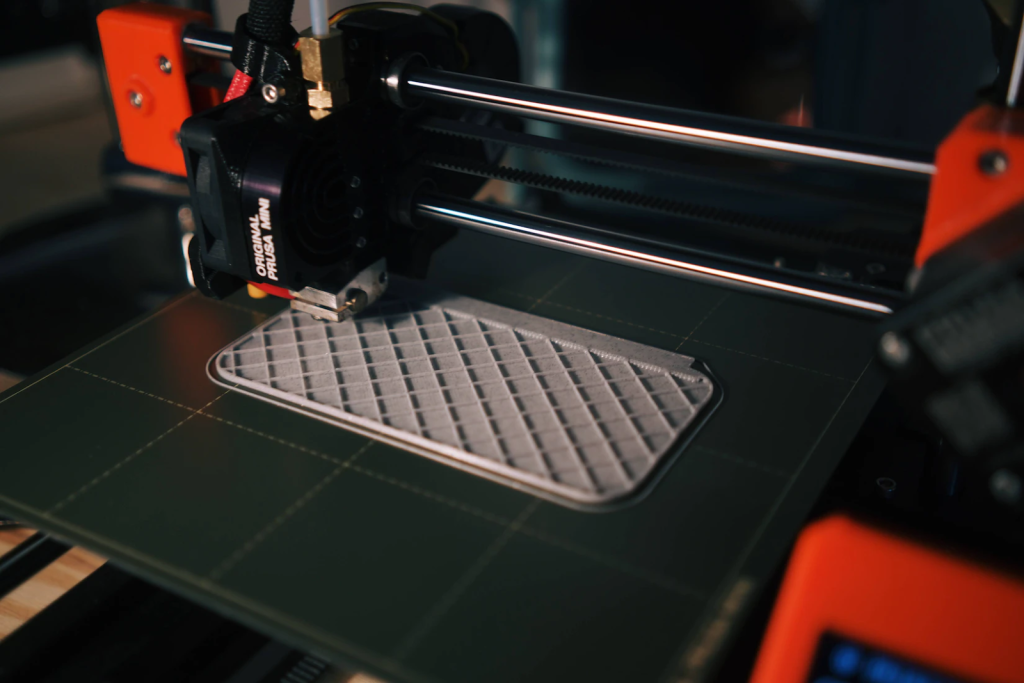There are many technical specifications that you can look at when deciding which 3D Printer to buy in 2021. In this guide, we will also consider the practical side and not just the technical specs.
Size
For home use the size of printer you buy is important. Check that the external dimensions of the printer will fit the table or desk where you will be placing it. It is not a great idea to move the printer around when you have it leveled and working correctly, so make sure it won’t be in the way.
Also, check the build volume or maximum size that the printer can build. This is the trade-off as a larger build volume usually equals a larger printer. There are some designs that maximize the print volume though without making the printer overly large.
Noise
Another practical thing to think about is noise. 3D Printers run for hours at a time to build even smallish parts. A noisy printer can be an issue in a stud, bedroom, or living room. All the 3D Printers I have seen make some level of noise, but some are extra noisy. Ask for a demo of the printer in a quiet environment before buying.
Material Selection
All home 3D Printers should be able to print PLA. PLA is a good environmentally friendly material to use for hobby and home printing. The advantage is that an open frame machine can easily print PLA so the printer should be cheaper.
ABS is an engineering plastic that has been used for a long time in manufacturing enclosures and other plastic parts. ABS is a very strong plastic that can also withstand heat better than PLA. You will see PLA parts deform in warm environments like cars when ABS printed parts are still doing fine. The problem with the high heat needed to print ABS is that you need a fully enclosed 3D Printer to control the heat around the part when cooling.
Flexible materials. If you want to print flexible or rubbery materials you will need a printer specified specifically for that. The extruder design is different to allow for the printing of these materials. Make sure you check if the printer can do this before buying.
Some printers are designed to only print with material bought from the same company that manufacturers the printer. They even put electronic chips in the material cartridges to do this. Stay away from these. You want the option to buy material from any supplier online or locally. Don’t get tied into a specific manufacturer for buying material.
Spare Parts Availability
3D Printers do break and some of the parts like bearings are considered wearing parts. Make sure the printer you buy is well supported and that the spare parts are easy to obtain.
Home 3D printers are often based on freely available open-source designs. Even some of the cheapest 3D printers are based on well-proven designs. These printers are great as spare parts are easily available. A lot of printers also use some 3D printed parts in their designs. This is great as you can over time print your own spare parts from freely available designs. If something breaks you can just take one of the parts you printed and replace the broken one. It is also possible to make some simple upgrades by printing alternative parts for your printer.
Print Quality
This is another consideration, although if you are not selling printed items, but just printing for a hobby or home use is not as critical. The minimum layer height and nozzle size influence print quality. In most printers, you will be able to change the nozzle size. Smaller nozzles take a lot longer to print the part, but the quality is better.

The minimum layer height is fixed for a specific printer. The smaller the minimum layer height the better quality prints you will be able to do. The great thing with layer height is that you can set it to any value larger than the minimum in the software. This means you can do a fast print by increasing layer height and then do a quality print afterward by decreasing it in the settings. If you want high-quality prints make sure to get a printer with a very small minimum layer height.
Control System
Check the control system and how it works. Most home printers in 2021 should have a stand-alone control system. You should be able to transfer the G-code files to the printer and leave it to do the printing. Again an open-source control system is better as replacement parts are freely available.
If you do find a printer that needs to be connected full time to a computer to do the printing it could be an issue. You won’t be able to take your laptop somewhere else if it needs to be connected full time and it could be connected for many hours for a print to finish. As I said, you should not run into this issue anymore, but just be aware.
Have fun with your 3D printer. 3D Printing at home can be loads of fun and you will learn a lot about design, software control systems, and electronics by getting involved in this hobby.








